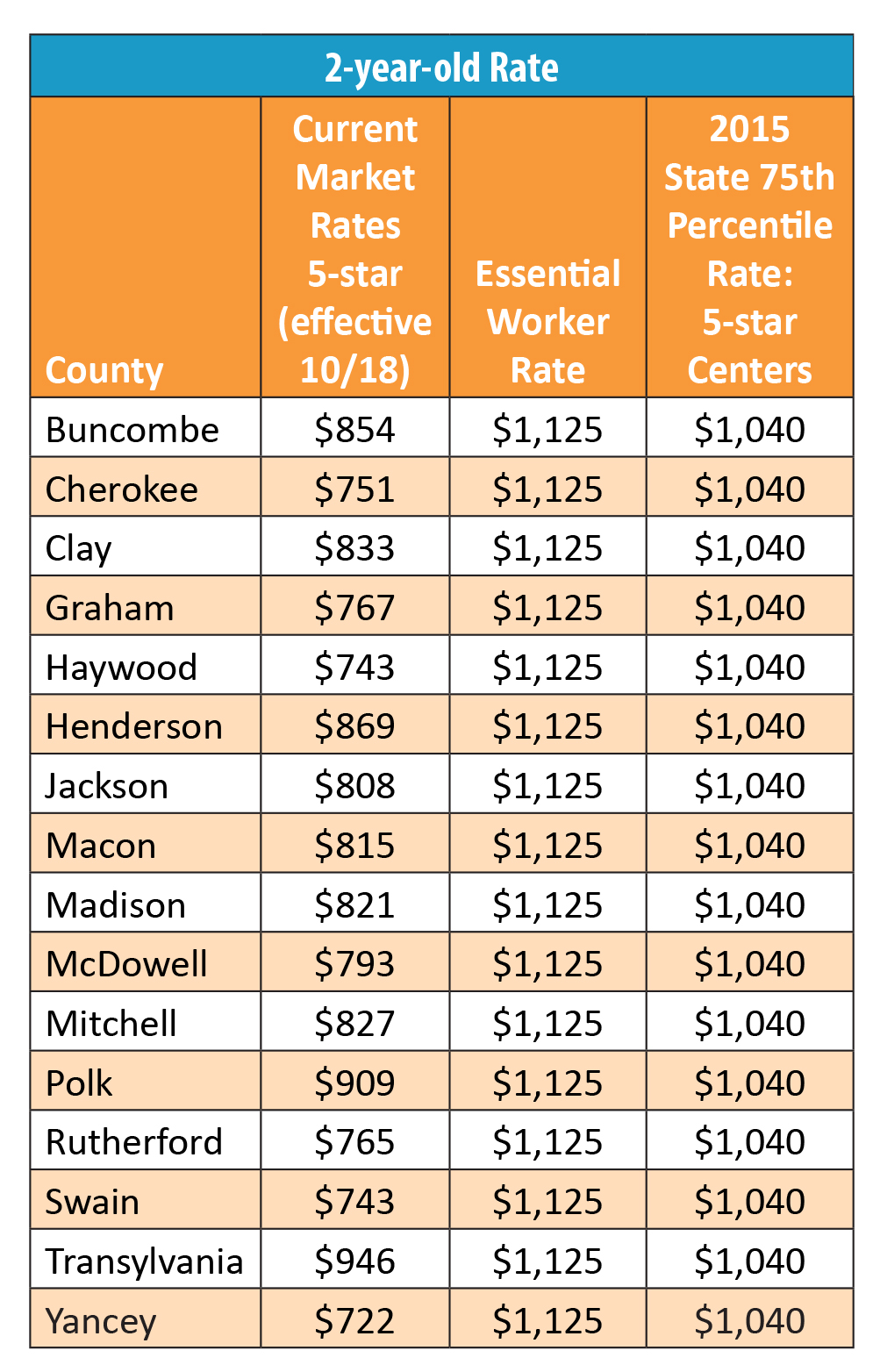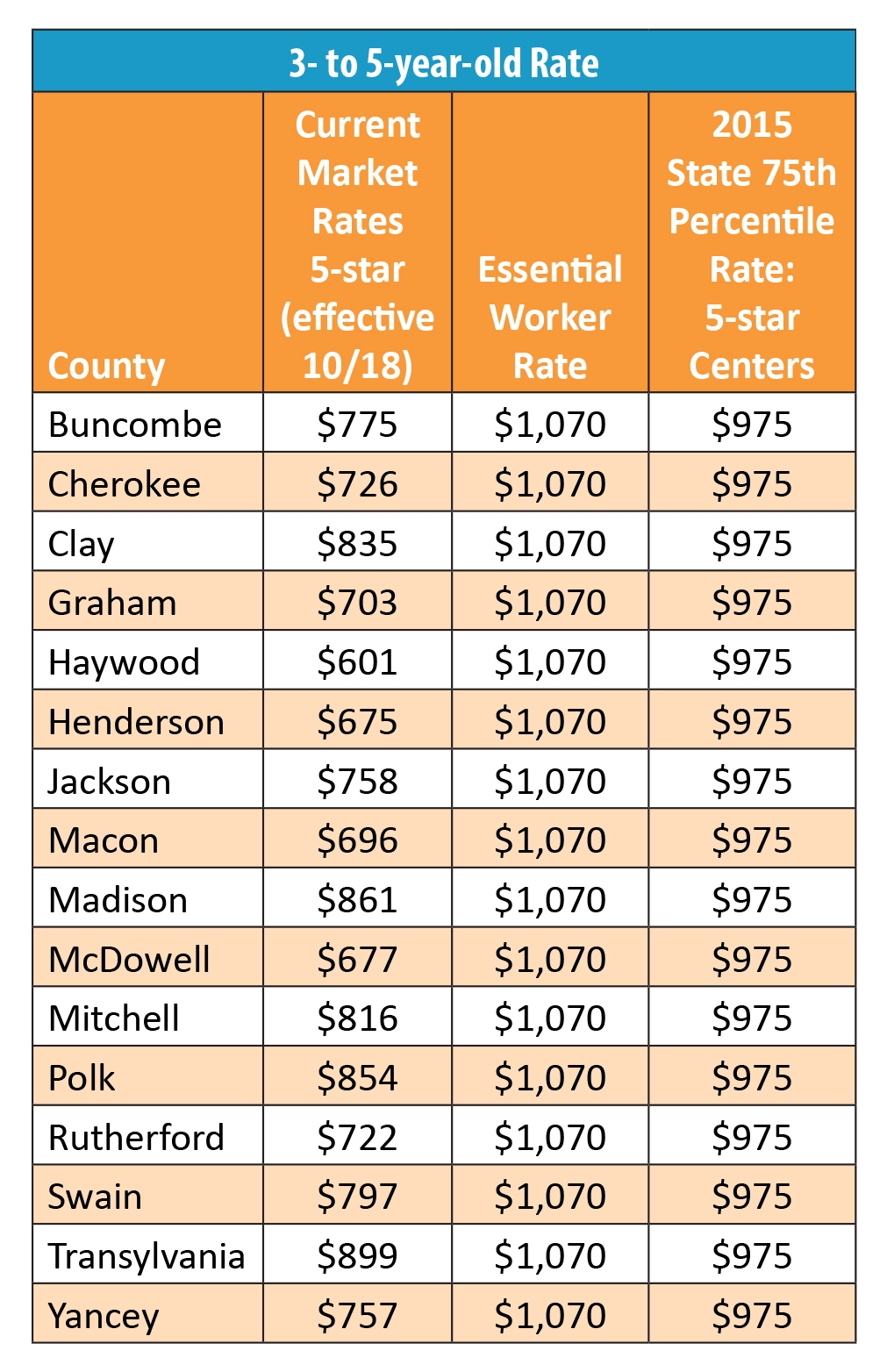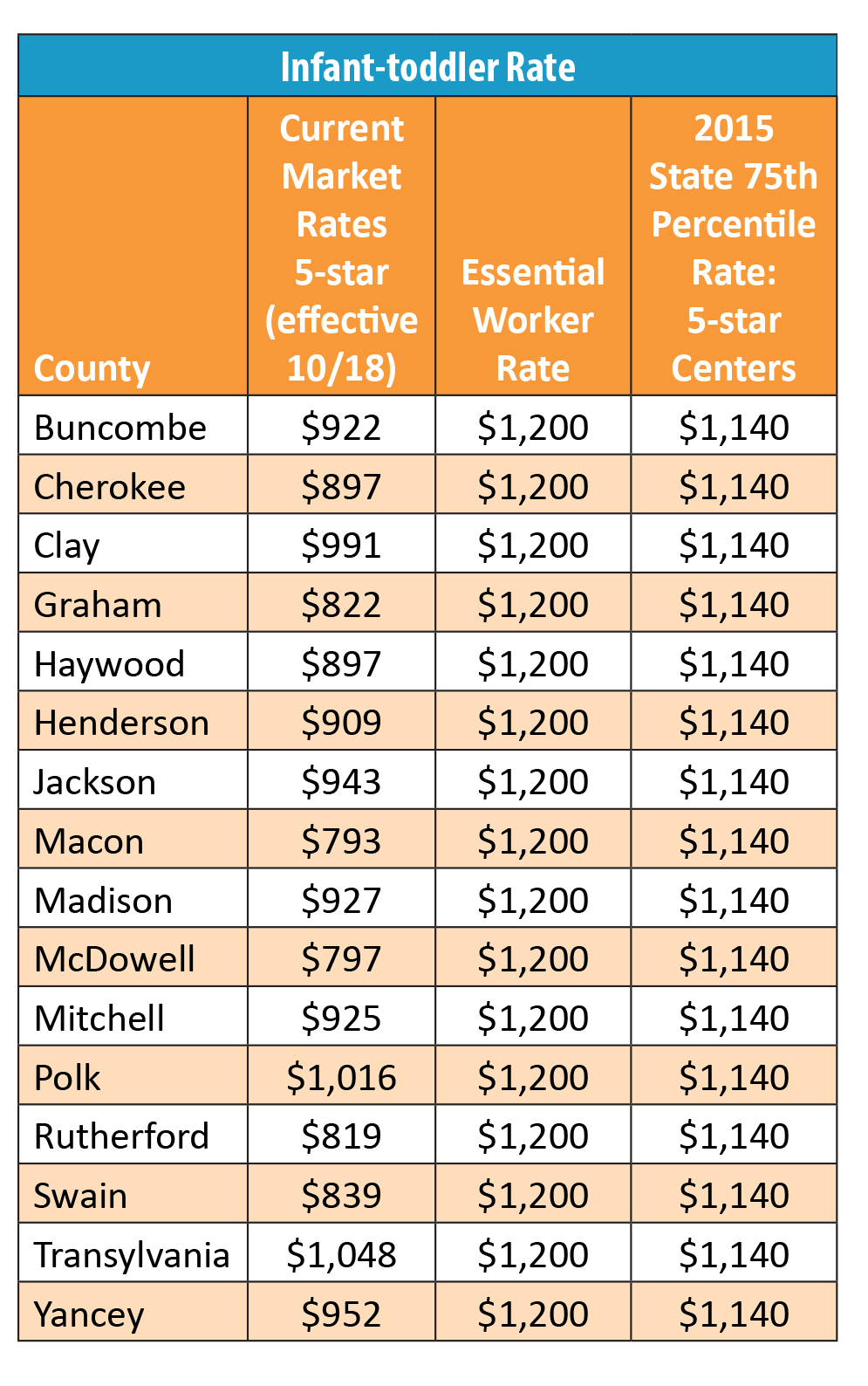Every child should have the opportunity to access a quality early education and a safe, supportive care environment, but too many of the youngest North Carolinians continue to be blocked by policies that keep such opportunities unaffordable and inaccessible to families across the state.
Pre-coronavirus, early childhood education’s financing model left nearly half of N.C. children living in child care deserts, where there aren’t enough child care slots for the number of young children in a community. Even with high tuition fees and low labor costs, child care providers operate on the slimmest of margins, and the COVID-19 pandemic has wreaked havoc on an already financially precarious industry that supports children’s well-being and parent’s work.
Quick action by the state’s Department of Health and Human Services to provide emergency funding and supports has allowed approximately 84% of child care centers and 92% of family homes to re-open, but most are operating at dramatically reduced enrollment. The loss of tuition coupled with increased health and safety costs is placing many programs at risk of shutting down permanently.
While emergency measures are needed to prevent the collapse of our early education system, we also need to be focused on enacting measures that re-build a stronger child care system to support our state’s future economic recovery. We know that North Carolina’s early education system was already financially untenable pre-COVID. The cost of delivering quality care, including the dire need for a living wage for early education teachers, far outstrips parents’ ability to pay for that care. An affordable and accessible child care industry requires a bolder public commitment of resources. One concrete response that policymakers can make now to stabilize the system as financing is restructured for long-term sustainability is to create a state floor in the reimbursement rate for providers who serve children in need.
Setting a state floor in child care assistance would ensure that child care programs, regardless of their location, would receive more equitable public funding to provide quality care for children. This action would strengthen the child care system, supporting programs in remaining open in the economic aftermath of the pandemic and allowing children and families greater access to quality care.
This action also directly addresses what is the most fundamental problem in early childhood education financing: the cost of delivering quality care is far greater than what the current county market rates provide. This means that providers have to reduce costs elsewhere—putting at risk the quality of care and underpaying early childhood educators.
The state would need to make an additional investment of roughly $94 million a year to ensure that the cost of delivering quality care is more adequately covered for child care centers only. These dollars would go a long way to stabilizing local businesses—often businesses owned by women and people of color—in communities across the state.
This proposal alone won’t stabilize the finances of the early childhood system to ensure that there is quality care for every child and family that needs it during COVID-19 and post-pandemic. But by establishing a floor, as the Department did in the early days of COVID-19, North Carolina can take an interim step and demonstrate its commitment to ensuring equitable access to quality child care, while giving policymakers more time to develop an alternative method for calculating the market rate for child care.,
Where a child spends its early years shouldn’t determine whether that child gets the full benefit of a quality early childhood experience, nor should communities have to consider how to rebuild and recover from COVID-19 without the essential role of child care providers to support working families. With a higher reimbursement rate for care, child care providers could make greater progress towards boosting the wages of early childhood educators.
Overview of supports to early childhood under COVID-19
The research is clear that making sure child care providers have dollars that adequately support them to deliver quality child care is essential to sustaining the system. That is why it was so important that North Carolina moved quickly to respond to COVID-19 and its impacts on child care. The Division of Child Development and Early Education kept child care subsidy dollars flowing through the month of May, based on enrollment at the end February, not attendance March-May. The Division also provided bonus pay which both supported workers who earned low wages and recognized the greater risk to their health and well-being of working through the pandemic.
In addition, the Division increased the rate of reimbursement for children served during the stay-at-home order when essential workers could access child care (See Figure 1). While this latter policy approximates the establishment of a higher floor in the financial support provided to child care providers for the education of our children, it was left in place for too short a time and in the context of an unprecedented shock to the system that it is difficult to assess its impact.
Recognized as a leader in the South for the actions taken in early childhood, North Carolina can continue to lead by ensuring that our early childhood system is bolstered to equitably deliver high quality care to every child that needs it.
Investing adequately and equitably in the child care infrastructure of this state can no longer be the last on the list of to-dos for state policymakers but should be central to their work to rebuild and recover from this pandemic.
 Justice Circle
Justice Circle 

